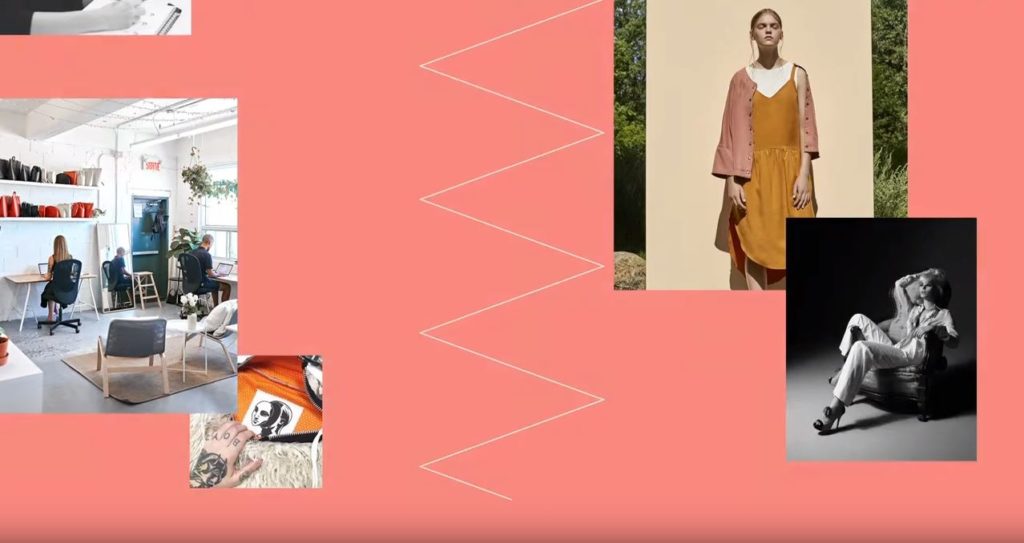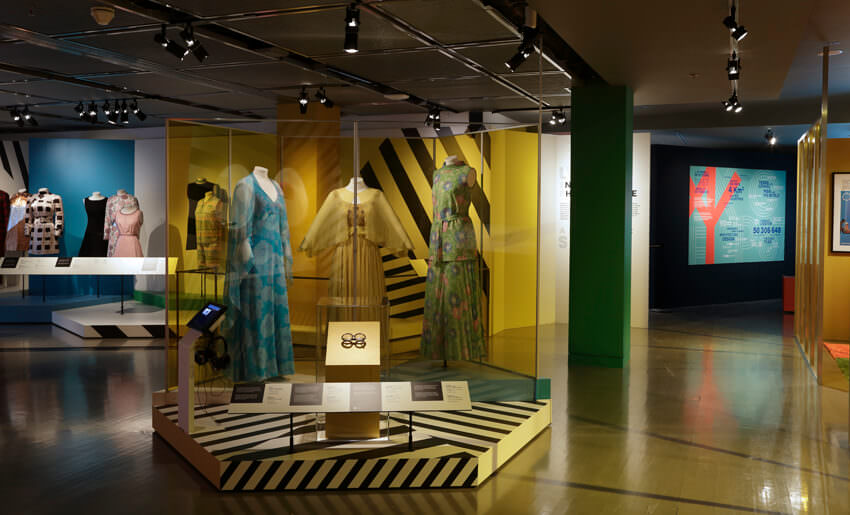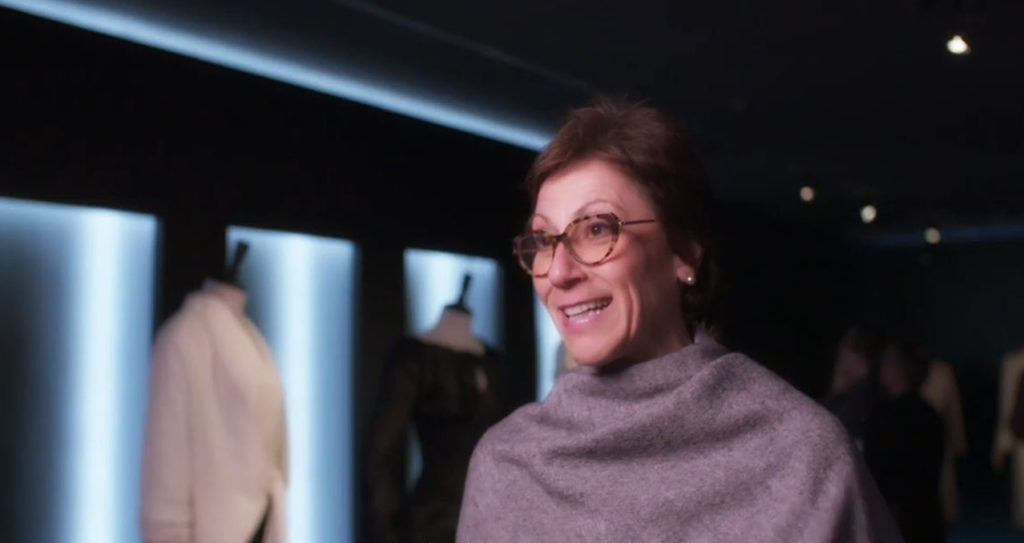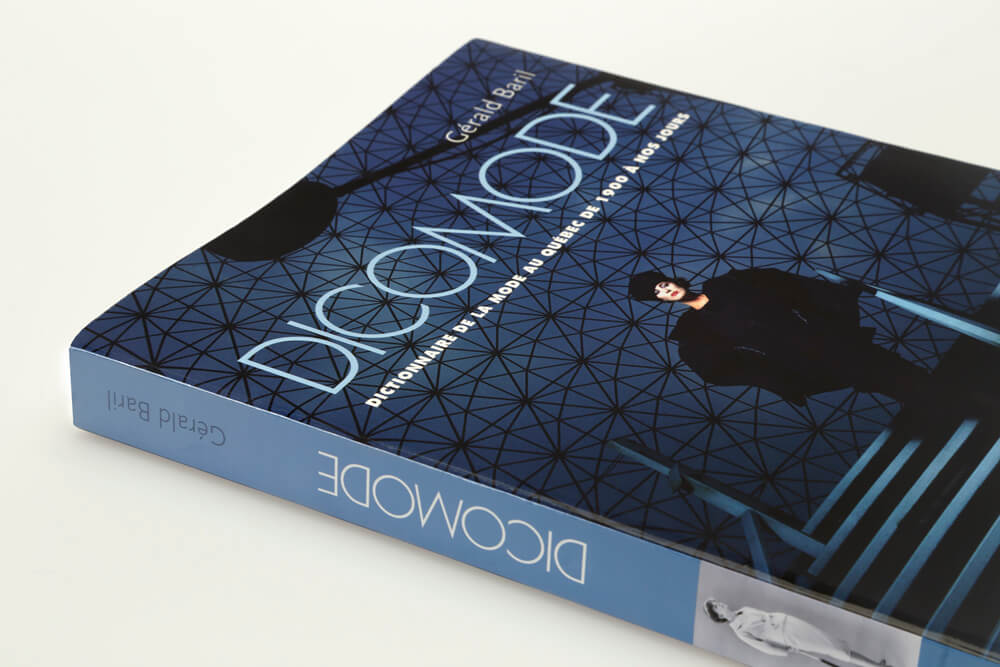About
EncycloFashionQC is the unique online encyclopaedic reference for the history of fashion in Quebec.
An initiative of the McCord Stewart Museum, EncycloFashionQC aims to be the authoritative source of information on designers, manufacturers, retailers, organizations, and events that have left their mark on fashion created in Quebec throughout the industry’s history.

EncycloFashionQC builds on the first published encyclopaedic reference on Quebec fashion, Dicomode, by Gérald Baril (Fides, 2004). An ongoing project, EncycloFashionQC aims to adapt, update, translate, and often expand and illustrate the entries in that work. It will add new entries on an ongoing basis to reflect actors who have emerged since, or whose impact on the field warrants an entry.
The initial phase of EncycloFashionQC focusses on designers, who accounted for the greatest number of entries in the original work. Subsequent phases will target other categories of actors in the milieu to expand the panorama of who’s who in Quebec fashion.
The McCord Museum
The McCord Stewart Museum’s Dress, Fashion and Textiles collection of over 27,000 garments and accessories from the past three centuries, is an unparalleled resource that bears witness to the history of fashion created and worn in Canada, particularly in Montreal. Its Textual Archives and Photography collections contain images and documents relating to fashion design and retail, including the fonds of many Quebec designers. Beyond its collections, the McCord Stewart Museum also regularly generates content on Quebec fashion for its exhibitions and public programs. We are committed to sharing this content with a wide public.

EncycloFashionQC provides a platform for the McCord Stewart Museum to disseminate these historically significant resources. Links to new content, archival sources, images, and film will be added as they become available.
Why EncycloFashionQC?
Histories of the fashion industry are few and far between, and rarely look at the specific actors that give this creative economic sector its vibrancy. The histories of the companies, brands, and individuals that make up this dynamic sector of Quebec’s economy are the human stories of its trajectory. They bring us closer to the garments and accessories that survive as the most immediate and tangible historical record of fashion. They show the particular inflections of Quebec’s history on fashion created, purchased and worn here.
Quebec has long been a centre for fashion in Canada, largely because of its economic engine, the city of Montreal. From the beginnings of industrialization, the city has been a centre of fashion production, either the leading one in Canada or second only to Toronto. Its influx of immigrants and the availability of cheap labour in the surrounding rural areas created the conditions for the early industry to thrive.
Today Montreal is the third largest garment-producing centre in North America, after New York and Los Angeles.
In addition, for many years Montreal has been the site of numerous initiatives to organize fashion creators and producers to better leverage various sectors of the industry.
Montreal has also enjoyed a reputation as a city where fashion is particularly important to consumers, a fact acknowledged by both citizens and outside observers. The city’s privileged economic position in the 19th and early 20th centuries fostered markets for fashion and the development of a strong retail sector.
Montreal has generated an abundance of creative talent that has encouraged entry into this highly competitive sector. Since the end of World War II, its designers have been vocal and visible in promoting what small-scale enterprise with an emphasis on novelty and creativity can bring to the larger field as a whole.
For all these reasons, Montreal has a long tradition as a place where fashion has a vibrant presence.
What is included?
EncycloFashionQC aims to cover actors from the entire territory of Quebec, from Montreal to Nunavik, and from Gatineau to the Gaspé. The principal focus of its first phase is designers from all sectors of the industry: womenswear and menswear of course, but also couturiers, tailors, furriers and milliners as well as specialty areas such as lingerie, swimwear, footwear, sports clothing and technical outerwear. Entries cover individuals and organizations whose base of operations is in Quebec, whose activity in the field has lasted five years or more, and whose significant contribution to the milieu can be documented.
Each entry documents an individual, organization, brand or event over time, along with signature aspects of its practice or production. It indicates the major categories and dates of activity. Entries are written in neutral language, focussing on verifiable historical information.
Whereas the primary sources for most Dicomode entries were interviews with the actors themselves or their collaborators, updates have benefitted from more recently available digital resources and from archival fonds in museum collections. Major print and web sources are listed for each entry.
Authors, either Dicomode, the McCord Stewart Museum or a collaborator, revisors, and the revision date are provided for each entry. Entries are at most 1500 words; however, the length reflects the depth of the sources available to the authors rather than the significance of the designer. Illustrations and photographs have been added when available. Image rights are complex and images have only been used if the rights have been cleared.
Keeping EncycloFashionQC current will be a collaborative effort so the site has been constructed to allow readers to share their knowledge with the EncycloFashionQC team.

Forgotten contributions
While EncycloFashionQC aims to be exhaustive, constant change is a given in the field of fashion and some contributions have been forgotten or entirely lost. Do you know of an individual or organization who has left a mark on fashion in Quebec who is not yet in EncycloFashionQC? Please make them part of history!




